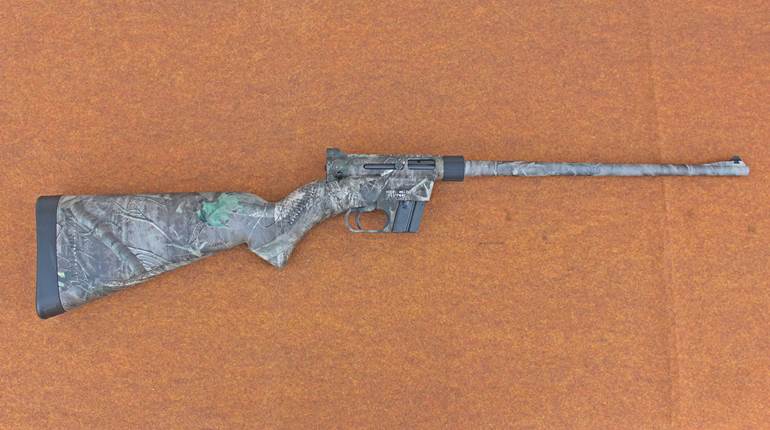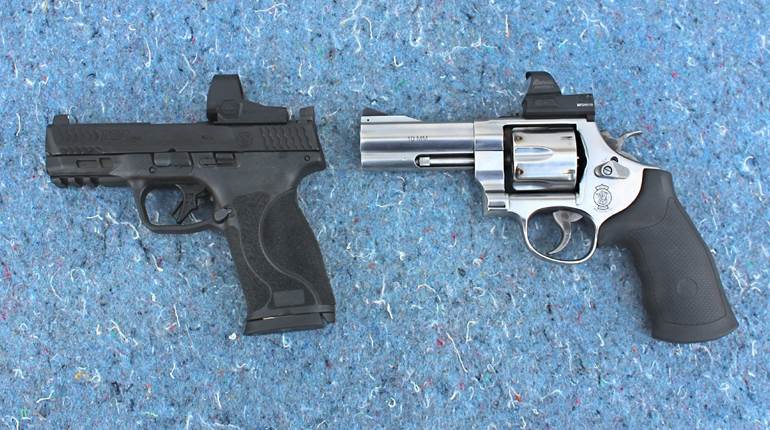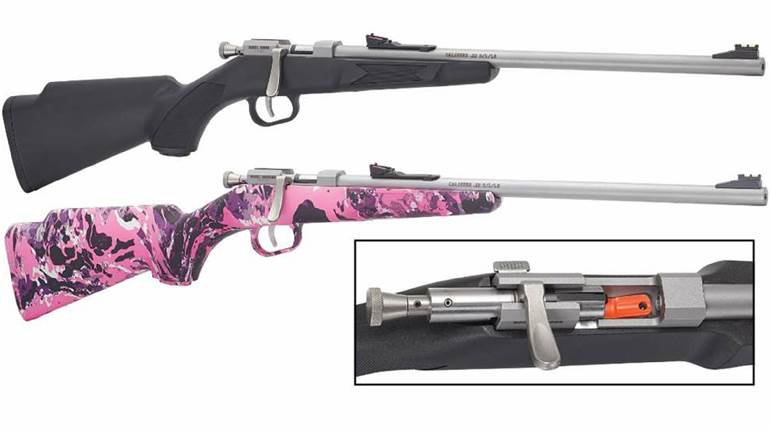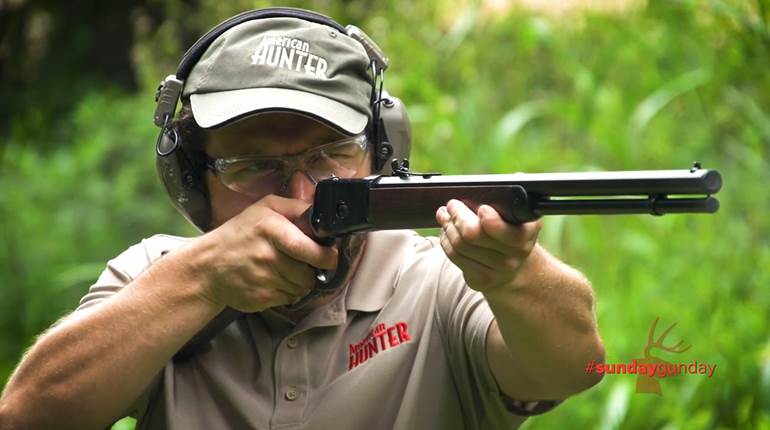
One of my colleagues and I were talking just the other day about the current demand for inexpensive firearms. Budget-friendly models fill important roles for folks who are operating with limited funds or beginners who want to test the waters without having to buy premium-priced gear to do so. Thanks to improvements in manufacturing processes and dedicated manufacturers, we are seeing a variety of well-made guns at surprisingly good prices.

However, there is a down side to this trend. This demand for low prices has led to a bland, utilitarian landscape of flat black finishes and injection-molded polymer. It’s like urban blight is encroaching on gun dealers’ display cases. Are the guns reliable? Certainly! Visually appealing? Not so much. Where's the hardwood, the character, the finer rifles that offer pride in ownership as well satisfying groups down range?

Thankfully, Henry Repeating Arms is an American manufacturer working to stem the tide of gun production mediocrity with neatly crafted .22 rimfire carbines that are as easy on the eyes as they are comfortable to shoot. The company offers a diverse range of rimfires with prices and features to meet different needs. For those who want to spend less, the popular one-million-sold “basic model” standard H001 models are both handsome and handy. The American walnut stocks enhance the classic look and feel of these rimfire lever-action carbines.

For those who want a spiffed up .22 with a shining personality, the Golden Boy series is decked out with polished brass alloy receivers and fixtures to complement the blued steel and American walnut. They also handle and shoot beautifully.

At the top end of the scale are the models in the company’s various collector series of rimfires. For 2019, Henry opted to create a .22 rifle unlike anything it has offered before called the American Eagle. As a member of the Silver Series, it’s a lever-action rifles based on the Golden Boy design with brightly polished nickel plated fixtures instead of brass. Marketing teams love to describe their products as having a “mirror shine.” These nickeled guns actually do have a mirror finish. In fact, it was a challenge to photograph it. The nickel caught me in the act of taking the pictures (there I am reflected in the barrel band) and the finish picked up the brown tones of the wood around it so clearly that it looked more golden than silver. If your goal is to be stealthy in the woods, this isn’t the gun for you.


As one might surmise from the rifle's name, and the image on the stock, this gun is a tribute to the American Bald Eagle. The American walnut stocks are embellished with artistic engravings of the sort usually reserved for the company's tribute rifles. The extensive engraving work clearly stands out from the rest of the American walnut stock thanks to a multi-step process that gives the wood the appearance of aged ivory. Layers of primers and ivory color are applied and then sanded down between applications in order to highlight the wood grain and produce a natural appearance. Once the engraving work is complete, the stocks are treated with a fixative to protect and preserve the unique color.

The standard H001 round profile barrel has been upgraded to a 20" long blued steel octagonal barrel with polished flats. There is no rail or optics mounting system for this rifle in order to preserve the smooth, clean lines of the nickeled receiver. The company has also removed the sling swivel studs to preserve the stock's finish. Besides these two concessions to preserve the rifle's finish, this gun arrives ready for a trip to the range.

The sight system consists of a fully adjustable Marbles semi-buckhorn rear sight dovetailed into the barrel and paired with a dovetailed brass bead front sight. The remaining external controls, including the bolt, hammer, trigger and standard size lever are all made of steel with a matte black finish. The tubular magazine is loaded from the front via a cartridge shaped cutout. The internal magazine tube is constructed of brass with a knurled steel knob and a rubber gasket to keep it locked in place until it's twisted and pulled out for loading.

The hammer and trigger have serrated surfaces for improved purchase. The trigger pull on this gun was a smooth 3 lbs. 8 oz. The external safety for this rifle is the hammer's half-cock position. With the hammer in this position, the trigger won't cycle and the hammer rests out of contact with the firing pin. When the hammer is fully cocked, manually or by cycling the lever, the trigger is unlocked and the rifle will fire when the trigger is pulled.

Since I was going to indulge myself with trip to the range to shoot a show piece, it seemed like a good time to take advantage of the caliber markings on this rifle's barrel. Most of today's .22 caliber platforms are marked as “.22 Long Rifle” or just “.22 LR,” which is the most potent and popular of that particular .22 rimfire cartridge lineage. Its predecessors include the slightly shorter and less powerful .22 Long and the downright diminutive .22 Short. On the right side of the American Eagle's barrel, just below the rear sight, the barrel is stamped “Calibers .22 S/L/LR.” That means this rifle can safely chamber and fire all three cartridges without any modifications.

The mid-size .22 Long cartridge has gone the way of the Dodo bird. There’s simply no demand for it. However, .22 Shorts are still produced in relatively limited quantities. Aguila, CCI, Remington and Winchester keep at least one or two Short loads in their catalogs. Even though this ammunition costs a bit more these days, it’s good fun to shoot at the range. These loads are less noisy, produce air gun levels of felt recoil and the magazine of this rifle will hold 21-rounds of Shorts or 16-rounds of .22 LR. That means less time is spent reloading and more is used pulling the trigger. Thanks to the rifle’s 20" octagonal barrel, this ammunition was supremely soft shooting which makes the gun just that much more enjoyable to work with.

The American Eagle functioned flawlessly with all of the .22 Short ammunition fired. I've rarely run into feeding issues with Henry's rimfires when loaded with .22 LR. I thought there might be a chance of feeding issues with the smaller cartridges, but the gun ran like it was made for them. The action was smooth, clean and reliable.

I expected to see some degradation in the rifle's accuracy shooting the smaller, slower 29-gr. bullets of the Shorts at 50 yards compared to the faster 40-gr. bullets typically launched by .22 LR loads. Longer bullets provide more surface area for the barrel's rifling to bite into which increases bullet stability. However, the Shorts turned in acceptable group sizes at this distance. All three of the Short loads used for formal accuracy testing, two from CCI and one from Winchester, are sub-sonic loads. Five 5-shot groups were fired from a bench rest using the factory installed iron sights.

The CCI CB Short is designed specifically to be about as quite as possible without a sound suppressor by launching a 29-gr. lead round nose bullet at a listed velocity of 710-fps. It was, in fact, too slow to register on my chronograph, so I'll stick to listed velocities this time around. The CB Short tapped out a best group of 1.27" with a five group average of 1.36".

The CCI Short 29-gr. copper-plated round nose it a target shooting load that launches at a zestier speed of 1080-fps. It printed a best group of 1.24" with an average of 1.32". The Winchester Super-X .22 Short was the fastest load of the group topped with a 29-gr. copper-plated round nose at a listed velocity of 1095-fps. This load’s best group was 1.36" with an average of 1.42".

When the American Eagle arrived at my FFL, several of the folks who work there gathered around to take a look at it. It was like Christmas had come early this year. Near the end of an enjoyable conversation about how much fun Henry .22s are to shoot, someone asked, "You're not going to take this one to the range, are you?" He assumed it was a for-display-only piece, the kind that collectors like to show off but never get dirty.

This gun is certainly handsome enough to fit the bill. However, it’s the opinion of many likeminded Henry fans that their rimfires are meant to be used and not just stored in a glass cases. After one of the most quiet, soft-shooting range sessions I've had in a long time, I would say the American Eagle is a piece of modern Americana that can be enjoyed both on and off the range for years to come. This is just one of the finer rifles the company offers. Thank you, Henry, for continuing to remind us that rimfires can be both beautiful and fun to shoot.

Specifications:
Manufacturer: Henry Repeating Arms
Model: American Eagle
Model Number H004AE
Action: Lever Action
Caliber: .22 Long Rifle/.22 Long/.22 Short
Receiver: High Polish Nickel Plated
Barrel: 20" Octagonal, Polished Blued Steel
Stocks: Engraved Ivory Colored American Walnut
Rear Sight: Adjustable Semi-Buckhorn with Diamond Insert
Front Sight: Dovetail Brass Bead
Drilled and Tapped: No
Sling Swivel Studs: No
Overall Length: 38.5"
Weight: 6.75 lbs.
Magazine: Tubular with Removable Brass Liner
Capacity: 16 Rounds .22 LR, 21-Rounds .22 Short
Twist: 1:16” RH
Rifle Grooves: 6
Accessories: Owner's Manual, Lock
MSRP: $950




































